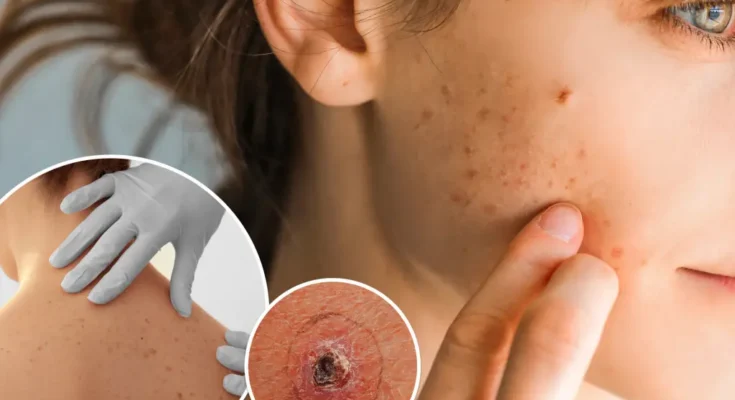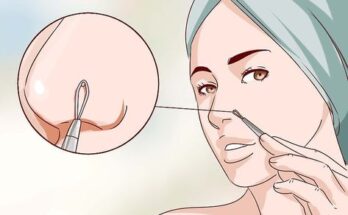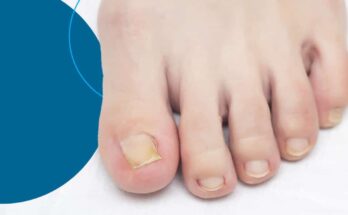Introduction: While acne is a common skin condition affecting millions of people worldwide, there exists a rare and more extreme form of acne that has baffled dermatologists for years: giant acne. Unlike the typical pimple, which is relatively small and temporary, giant acne presents as unusually large, painful, and persistent nodules or cysts. These giant lesions can disrupt the lives of those who suffer from them, causing emotional distress, physical pain, and long-term scarring. In this article, we’ll explore this uncommon condition in detail, shedding light on its causes, treatments, and the latest research aimed at understanding this unusual form of acne.
What Is Giant Acne?
Giant acne is often referred to in medical terms as “cystic acne,” but it involves particularly large cysts or nodules that can grow several centimeters in diameter. These large, inflamed masses are much more painful than typical pimples and can remain under the skin for extended periods, sometimes lasting for months. The cysts tend to form deep within the skin’s layers, filled with a combination of pus, oil, and dead skin cells.
The term “giant acne” is used to describe lesions that not only exceed the size of ordinary cystic acne but also have the ability to cause significant tissue damage and scarring if left untreated.
Causes of Giant Acne
- Severe Hormonal Imbalances: Hormones play a significant role in the development of acne, especially during puberty or times of hormonal flux like pregnancy or menstruation. However, giant acne tends to develop when there are severe imbalances in androgen levels, leading to overproduction of sebum. These hormonal shifts can lead to the formation of large, deep cysts that do not resolve as easily as typical acne.
- Genetics: Genetics play a major role in the development of severe acne. If your parents had cystic acne or other severe skin conditions, you might be genetically predisposed to develop giant acne as well. Researchers have identified certain genes that seem to contribute to increased oil production and skin inflammation, both of which are key factors in the formation of giant acne.
- Bacterial Infections: Acne vulgaris is caused by a bacteria called Propionibacterium acnes that thrives in clogged pores. In the case of giant acne, these bacteria can cause a severe infection deep within the follicle, creating large, painful cysts that often require medical treatment.
- Chronic Inflammation: In some cases, giant acne results from an overactive immune response to regular acne. When the body’s immune system is constantly fighting off acne-causing bacteria or debris in the pores, chronic inflammation occurs. This can cause tissue swelling, leading to the formation of large, painful cysts.
- Environmental Factors: Environmental irritants such as air pollution, harsh chemicals in skincare products, or even excessive sun exposure can contribute to the development of giant acne. These external factors can worsen existing acne conditions by causing additional irritation or by triggering increased oil production.
Symptoms of Giant Acne
The symptoms of giant acne differ from typical acne in several ways:
- Size and Depth: Unlike smaller pimples, giant acne cysts can grow several centimeters in diameter, forming large, swollen masses that are palpable beneath the skin’s surface.
- Pain: These cysts are often intensely painful due to the pressure exerted on the surrounding skin and tissue. The discomfort is usually constant and can worsen with movement or pressure.
- Slow Healing: Giant acne can remain under the skin for months, as it doesn’t typically burst like a regular pimple. As a result, these lesions can take a long time to heal, often leaving scarring or permanent indentations.
- Redness and Swelling: The area around the cyst is usually red, inflamed, and swollen, often affecting the surrounding skin tissue. In extreme cases, the swelling can cause visible deformities.
Complications of Giant Acne
If left untreated or not managed properly, giant acne can lead to a variety of complications:
- Scarring: One of the most significant risks of giant acne is scarring. Due to the depth of the lesions, they can cause permanent tissue damage, leaving deep scars that may require laser treatments or other interventions to minimize.
- Infections: Giant acne cysts, if ruptured, can lead to further bacterial infections or abscesses. If not treated quickly, the infection can spread to surrounding tissues or even into the bloodstream, leading to more severe health issues.
- Emotional and Psychological Impact: The physical appearance of giant acne can lead to significant emotional distress, including feelings of embarrassment, depression, and anxiety. Those affected may struggle with self-esteem issues, which can be exacerbated by social media or societal pressure to have clear skin.
Treatment Options for Giant Acne
- Topical Treatments: For mild cases, topical treatments containing ingredients like benzoyl peroxide, salicylic acid, or retinoids may help reduce the size and pain of giant acne. These ingredients can decrease inflammation and reduce the amount of oil produced by the skin.
- Oral Medications: In more severe cases, oral antibiotics such as tetracycline or doxycycline may be prescribed to reduce bacterial growth and inflammation. These antibiotics can help prevent the formation of new cysts while promoting healing of existing ones.
- Isotretinoin (Accutane): Isotretinoin, a potent oral medication, is often prescribed for extreme cases of acne, including giant cystic acne. It works by reducing oil production, promoting skin cell turnover, and decreasing inflammation. However, it comes with significant side effects, including dry skin and potential birth defects, so it is used under strict medical supervision.
- Corticosteroid Injections: For large, painful cysts, dermatologists may inject corticosteroids directly into the affected area. This can help reduce inflammation, speed up healing, and reduce the size of the cyst.
- Drainage and Surgical Removal: In cases where a giant cyst causes significant discomfort or is not responding to other treatments, a dermatologist may need to drain the cyst or surgically remove it. This procedure is typically performed under local anesthesia to minimize pain and prevent complications.
Preventing Giant Acne
While preventing giant acne entirely may not be possible, there are steps individuals can take to minimize the risk:
- Maintain a Healthy Skincare Routine: Regularly cleansing the skin with gentle, non-comedogenic products can help prevent clogged pores.
- Monitor Hormonal Changes: For individuals who experience acne flare-ups related to hormonal changes, medications like birth control or anti-androgens may help regulate hormone levels.
- Dietary Adjustments: Some research suggests that diets high in refined sugars or dairy products may exacerbate acne. Opting for a diet rich in whole foods, healthy fats, and antioxidants may help prevent acne flare-ups.




One Comment on “Giant Acne: A Rare Dermatological Condition Beyond Ordinary Pimples”